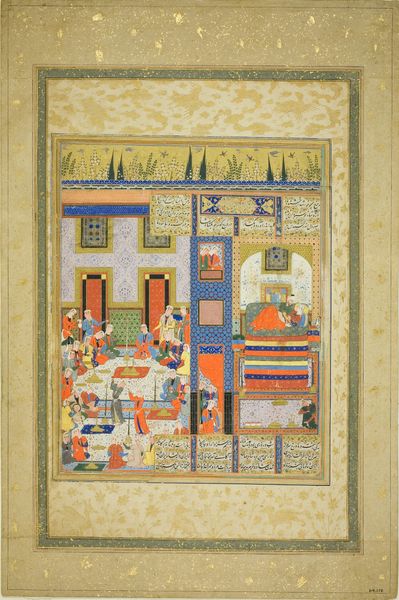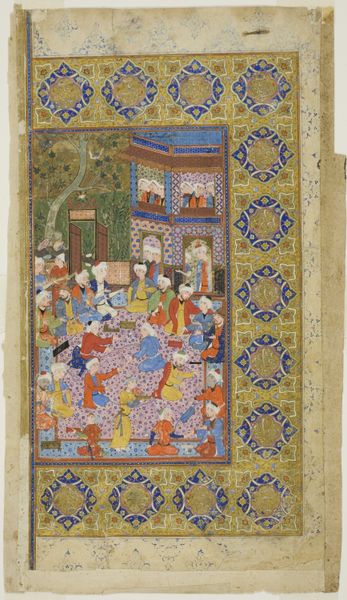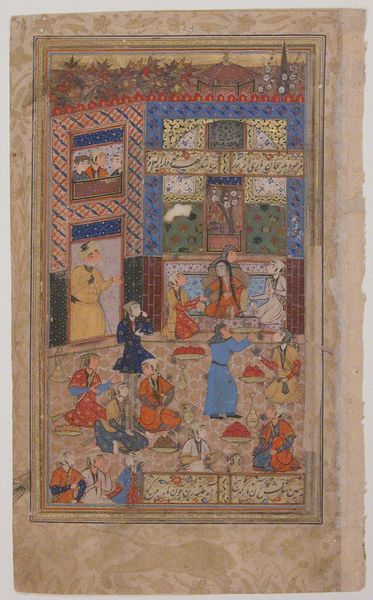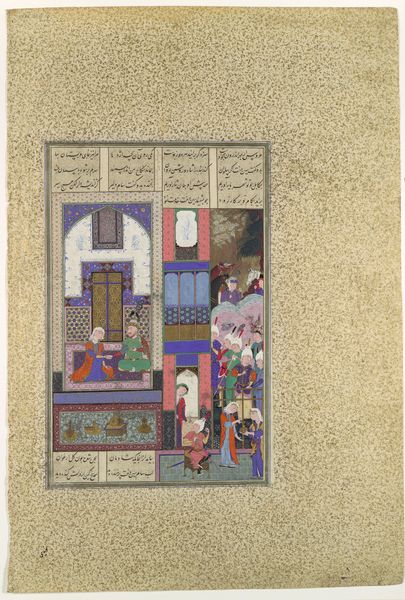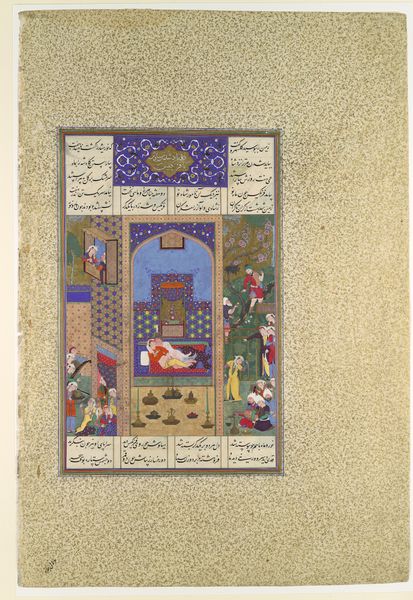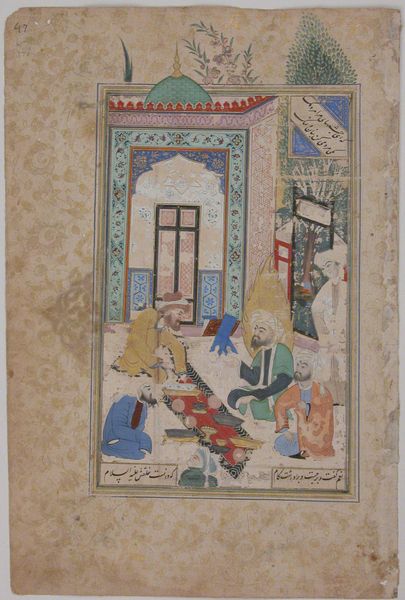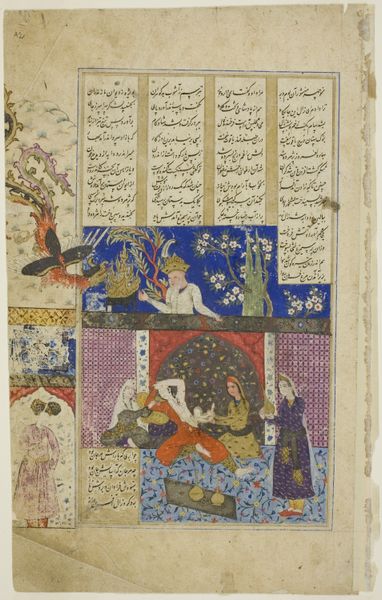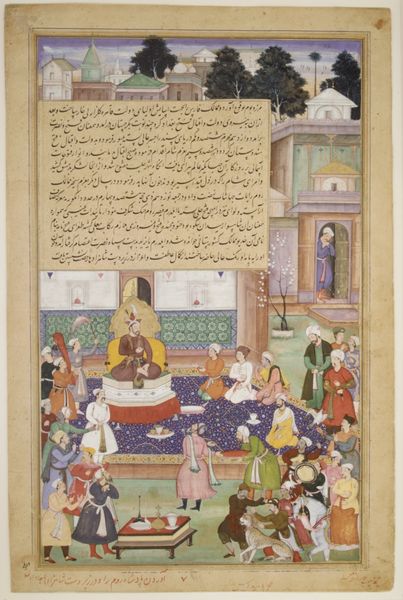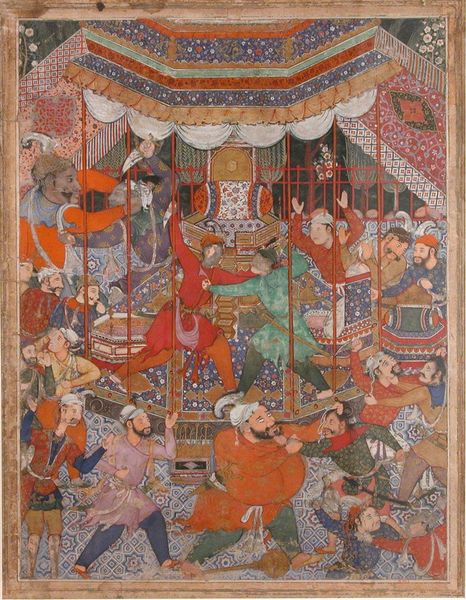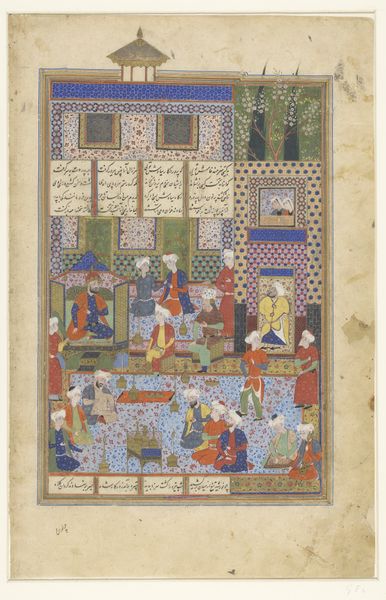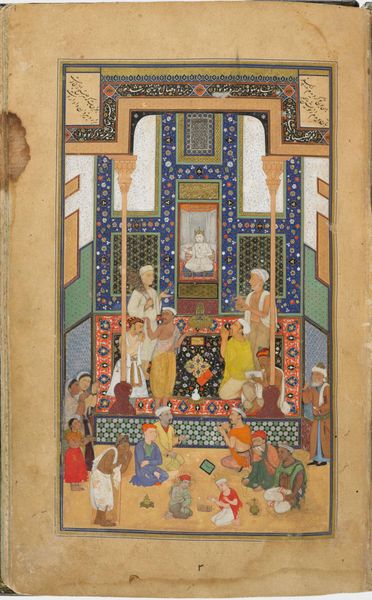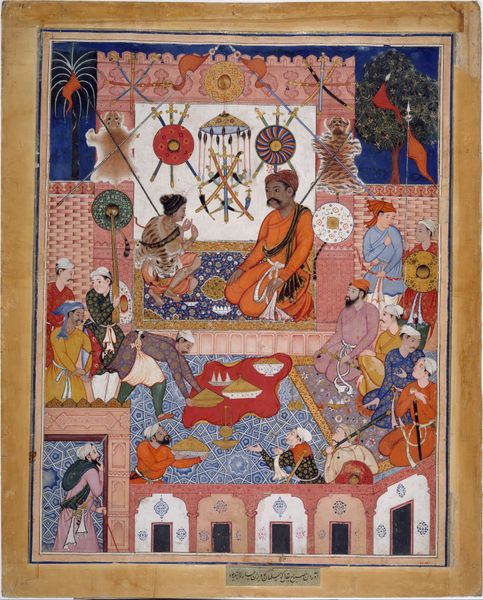
"King Salih of Syria Entertaining Two Dervishes", Folio from a Bustan (Orchard) of Sa'di 17th century
0:00
0:00
painting, watercolor
#
portrait
#
medieval
#
water colours
#
painting
#
figuration
#
watercolor
#
men
#
islamic-art
#
genre-painting
#
miniature
Copyright: Public Domain
Curator: The opulence here is striking! There’s a softness and depth, the delicate layering of watercolour creating a kind of luminous effect on the figures. Editor: Indeed. We're looking at "King Salih of Syria Entertaining Two Dervishes," a 17th-century folio from Sa'di's "Bustan," or "Orchard," presently housed here at the Metropolitan Museum of Art. Its creation would have involved a highly skilled atelier working under courtly patronage. Curator: I see. The materials themselves speak volumes, don't they? High-quality paper, the cost of pigments, the sheer time invested... It reflects a hierarchical structure where the artist likely existed within a system of dependence. Was their labor rewarded according to the perceived success of the piece? Editor: It’s almost certain that patronage dictated production, yes, but there’s a wider historical narrative too. The circulation of these manuscripts across vast distances served political and cultural purposes – solidifying relationships between rulers, showcasing power, transmitting ideas. This miniature would have played its role in that context. Curator: Look closely and you'll see the intricate textile patterns that repeat within the image itself; carpets beneath the figures and hung above them. It feels deliberate. Are those repeated visual cues a way to tie these diverse individuals together? What might those artisans have been earning relative to those commissioning such costly textiles? Editor: I hadn’t thought of it quite that way. Perhaps, though I am keen to point out the very theatrical composition. King Salih presides over this intimate scene, an audience carefully arranged as he displays generosity. Curator: To me it seems to imply something wider. Consumption as a marker of status. Generosity and spirituality packaged within a commodity—perhaps? Even the 'dervishes,' often seen as figures outside of worldly concerns, are here positioned as guests being actively hosted, subjects being observed. Editor: Interesting. So, ultimately, we might consider it as a complex visual document reflecting a very specific socio-economic moment. Curator: Exactly. Material realities shaping artistic production and the consumption of those items shaping power. Editor: That's given me a fresh way of seeing its layers. Curator: Likewise, exploring its reception through your framework enriches my view on the material's impact on viewers both past and present.
Comments
No comments
Be the first to comment and join the conversation on the ultimate creative platform.
